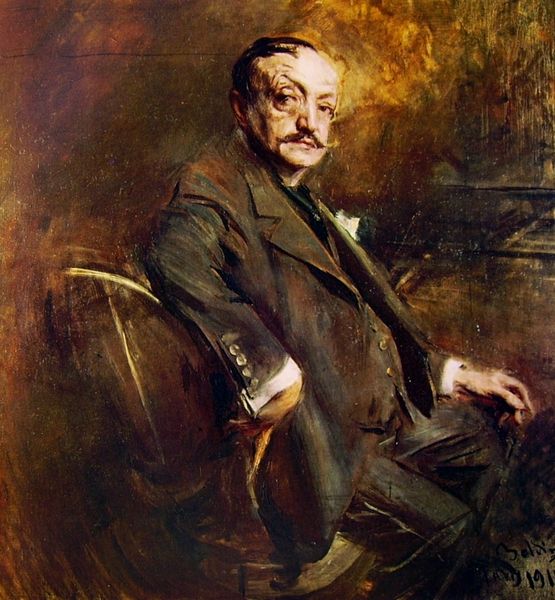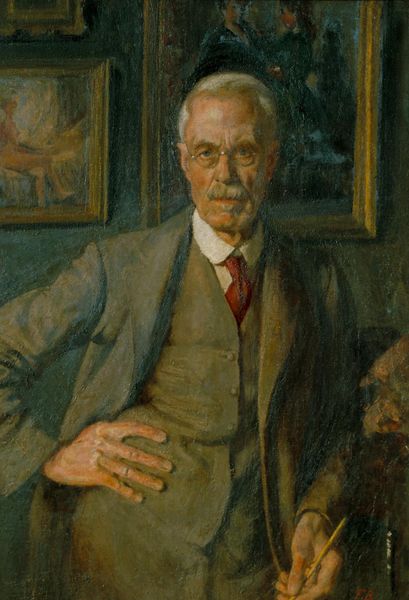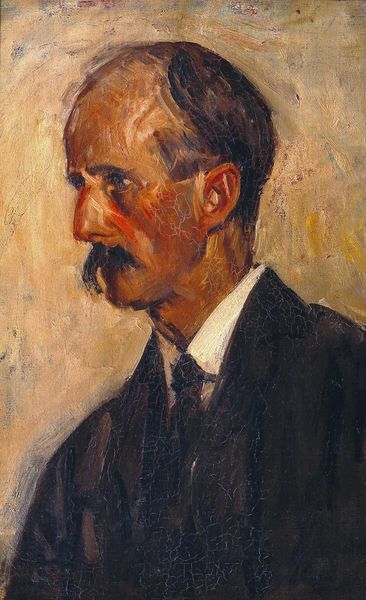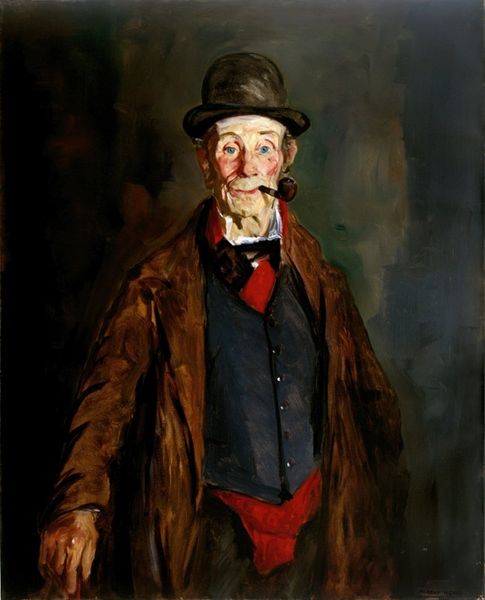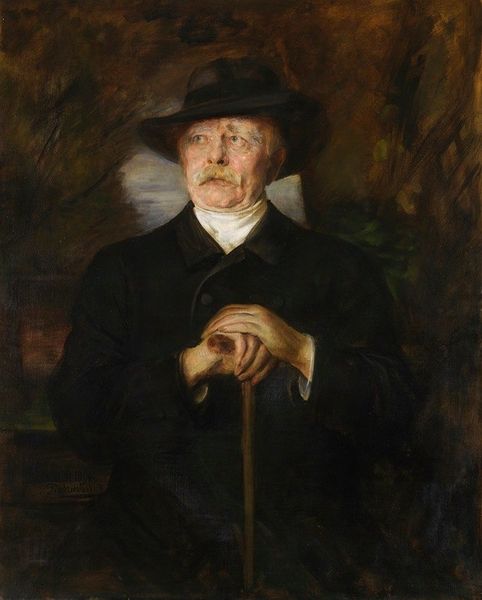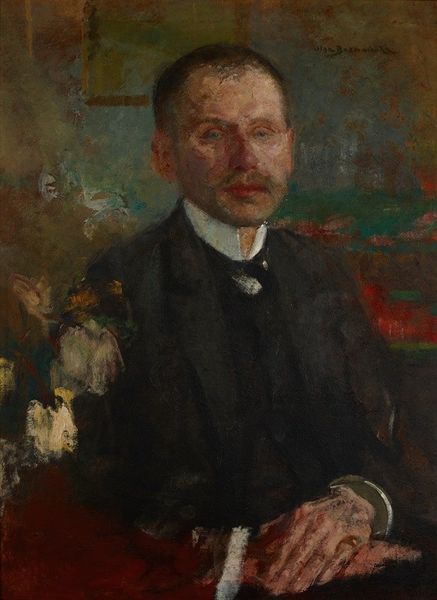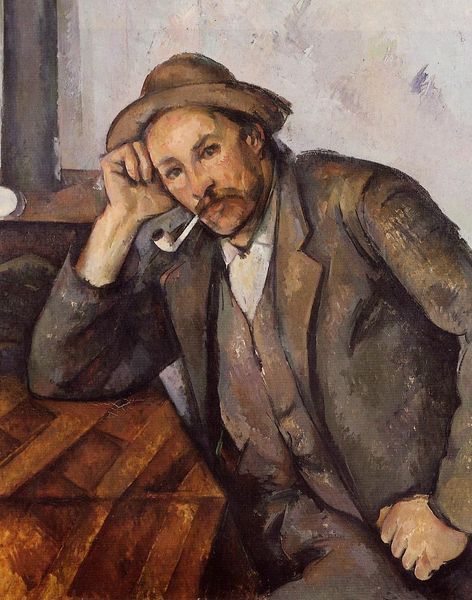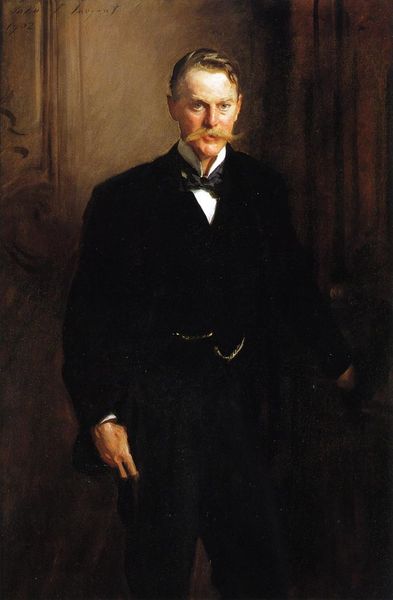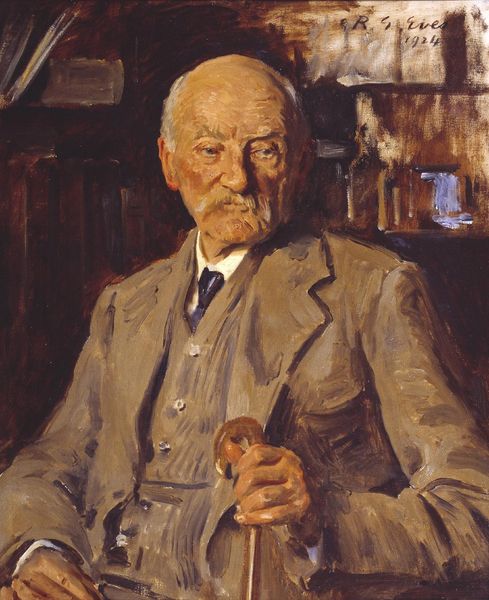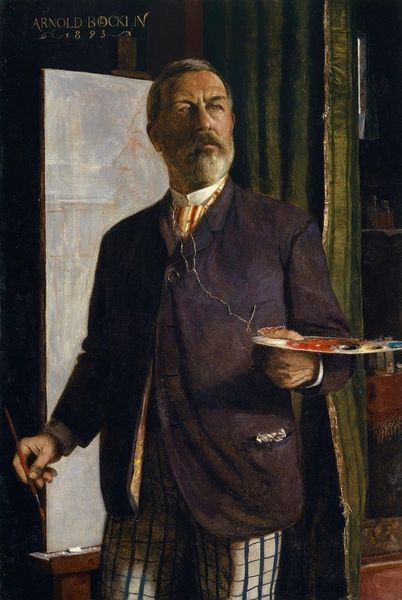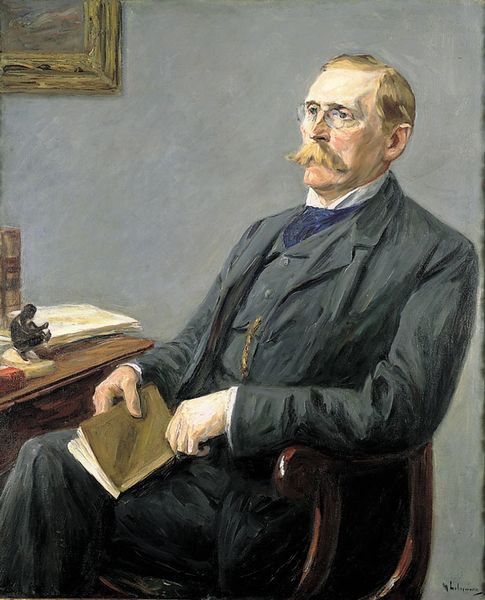
oil-paint
#
portrait
#
self-portrait
#
oil-paint
#
german-expressionism
#
oil painting
#
expressionism
#
modernism
Copyright: Public domain
Curator: Let’s turn our attention to Lovis Corinth's "Self-Portrait at the Easel," painted in 1919. A fascinating example of German Expressionism rendered in oil paint. Editor: Whew, intense. I immediately feel a kind of melancholy clinging to the man. The palette is quite dark, save for his face which looks weary. It's like peering into a mirror and not liking what you see, and expressing it honestly. Curator: Indeed. The expressionistic style really amplifies that sense of weariness you're picking up on. Corinth painted this when he was around sixty years old, following a stroke. Consider the socio-political context too. Germany had just come out of World War I, facing widespread devastation. This certainly weighed heavily on artists. Editor: You can almost feel that weight in the brushstrokes, so thick and urgent. It’s less about pretty appearances and more about…exorcising something. Like he’s battling something just by putting paint on canvas. He isn't concerned with precision; he is interested in expressing his truth! Curator: Absolutely. The looseness is a defining feature of Expressionism, which rejected academic traditions to represent subjective experience. What stands out to me is how he portrays himself amidst the tools of his craft—it emphasizes the act of painting as a means of grappling with personal turmoil but also engaging a larger public through visual engagement with the "New Objectivity". Editor: See, what I find so poignant is that it’s not theatrical. He's not striking a pose. He is caught, perhaps even trapped, between being a man and an artist in the privacy of his studio, but shares his truth with his audience so bravely. There is nothing like standing before one's own art, or in this case, facing it as your very subject, exposing vulnerabilities. Curator: I concur. There's definitely an element of quiet contemplation rather than flamboyant performance. This piece reveals something about art's capacity to become the terrain where inner experiences are worked through publicly— where artistic practice becomes political in unexpected ways. Editor: It's a brave vulnerability; perhaps the strongest statement any of us can make, publicly, or privately. Curator: It does encourage us to consider the interplay between individual struggle and collective historical forces. Editor: Beautiful, thank you.
Comments
No comments
Be the first to comment and join the conversation on the ultimate creative platform.
